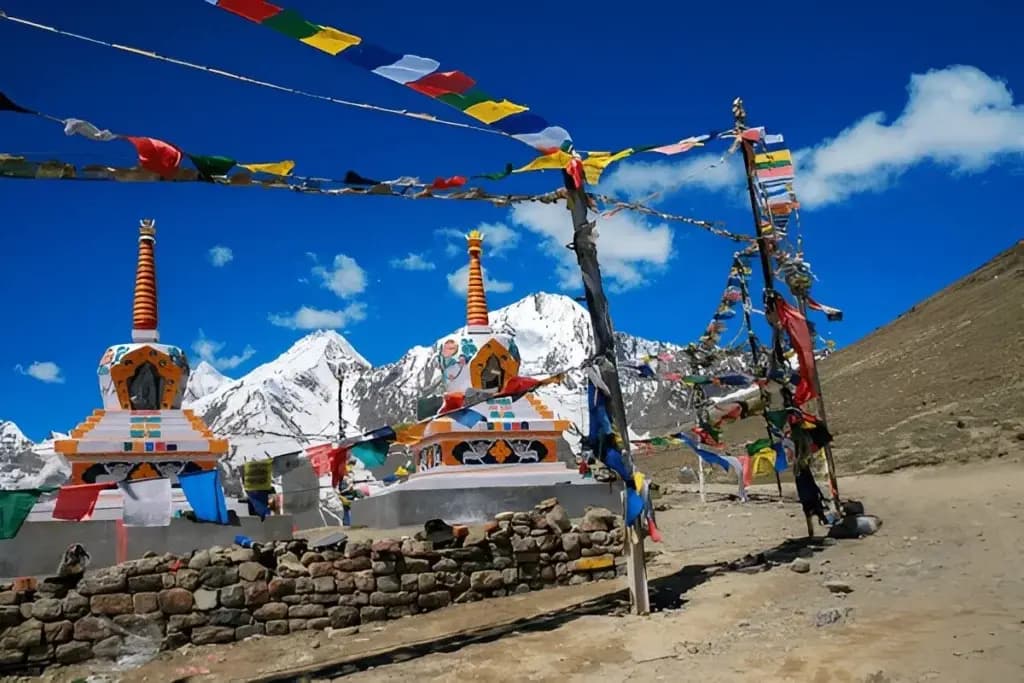
If you’ve ever imagined a journey through a snow-covered desert, Spiti in January is an experience like no other. The valley transforms into a breathtaking white wonderland, where silence blankets the rugged terrain and every corner glows with icy charm. Though winter brings extreme cold and limited accessibility, it also reveals Spiti’s most authentic and peaceful side. Travellers can explore ancient monasteries, frozen rivers, and warm homestays surrounded by snow-draped peaks. With the right preparation and reliable Spiti Valley tour packages, your winter trip can be both safe and unforgettable. Supported by Spiti Tourism, this journey lets you witness the untouched magic of the Himalayas in their purest form, serene, frozen, and deeply spiritual.
Spiti Valley Weather in January
January brings bone-chilling cold to Spiti Valley, turning it into a frozen paradise. Temperatures often dip below freezing, and the entire region gets covered in snow, creating a breathtaking yet challenging landscape for those seeking true winter adventure.
The valley’s beauty is surreal, with snow-dusted monasteries, frozen waterfalls, and glistening white peaks all around.
How to Reach Spiti Valley in January
Reaching Spiti Valley in January is only possible from the Shimla side, as the Manali–Kaza road remains closed due to snow at Kunzum Pass.
Open Route: Shimla → Narkanda → Rampur → Kalpa → Nako → Tabo → Kaza
Tips for the Journey:
5 Best Places to Visit in Spiti Valley in January

Below are the 5 best places to visit in Spiti Valley:
1. Kaza:
Kaza, the heart of Spiti in January, becomes a peaceful snow-covered haven. As the main town, it offers limited yet warm homestays, a few open cafes, and stunning Himalayan views. It’s the perfect base to explore nearby monasteries and experience the calm rhythm of winter life.
2. Key Monastery:
Perched dramatically on a hilltop, Key Monastery looks straight out of a dream in January. Surrounded by snow-capped peaks, it offers breathtaking panoramas and deep spiritual serenity. If the road is open, witnessing prayers amid the snow-clad silence is a soul-stirring experience for any traveller.
3. Tabo Monastery:
Known as the Ajanta of the Himalayas, Tabo Monastery is one of the oldest Buddhist monasteries in the world. During Spiti in January, its mud walls and ancient murals rest silently beneath snow, offering travellers a glimpse into Spiti’s timeless spirituality and centuries-old monastic traditions.
4. Kibber Village:
At over 14,000 feet, Kibber Village becomes a pristine white wonder in January. Known for its snow leopards and dramatic landscapes, it’s a dream for adventure seekers and photographers. The village’s stone houses and warm locals offer a glimpse of life in one of the world’s highest inhabited regions.
5. Dhankar Monastery:
Clinging to a cliff between Tabo and Kaza, Dhankar Monastery offers surreal winter views of the Spiti and Pin rivers. Visiting this ancient site during Spiti in January can be challenging yet deeply rewarding; its calm aura, frozen surroundings, and breathtaking vistas make it an unforgettable stop in the valley.
Stay Options in January
Accommodation is limited but available.
Ask hosts beforehand about heating arrangements, as electricity can be intermittent.
Essential Travel Tips for Spiti Valley in January
Why Visit Spiti Valley in January

Despite its challenges, Spiti Valley in January offers a once-in-a-lifetime experience for adventure seekers. The untouched landscapes, frozen rivers, and snow-covered monasteries create an otherworldly charm, making it the perfect destination for those chasing peace, solitude, and the raw beauty of the Himalayas.
Final Thoughts
A winter journey to this remote Himalayan valley isn’t for everyone; it’s for those who seek solitude, silence, and unfiltered natural beauty. With mindful planning and preparation, travellers can witness the region’s frozen charm, where snow-clad mountains and stillness reveal stories of peace, endurance, and the timeless spirit of the high Himalayas.
1. Is it possible to visit Spiti in January?
A. Yes, travelling to Spiti in January is possible via the Shimla–Kaza route, as the Manali road remains closed due to snow. The journey is challenging yet rewarding, offering stunning frozen landscapes and peaceful winter vibes. Proper planning and experienced local drivers are highly recommended.
2. How cold is Spiti Valley in January?
A. Temperatures in January can drop as low as -25°C at night and hover around -5°C during the day. The valley remains covered in snow, creating a breathtaking winter setting. Travellers should be well-equipped with thermal clothing, insulated boots, and winter essentials for comfort and safety.
3. Are hotels and homestays open in January?
A. Only a few guesthouses and homestays remain open in Kaza, Tabo, and Nako during January. These stays offer basic amenities and traditional heating methods, allowing visitors to experience local hospitality. Booking in advance ensures a warm, cozy, and authentic stay amid the frozen landscape.
4. What should I pack for Spiti in January?
A. Packing wisely is essential for a winter trip. Carry heavy woollens, thermals, snow boots, gloves, and moisturisers. Include medicines, energy snacks, and backup power sources. Waterproof layers and sunglasses also help protect against snow glare and cold winds while travelling through Spiti’s high-altitude terrain.
5. Is it safe to travel to Spiti Valley in January?
A. Yes, Spiti Valley in January is safe for well-prepared travellers who plan wisely. It’s best to travel in groups or through trusted Himachal tour packages. Keep buffer days for snow delays, check weather updates regularly, and follow local guidance to ensure a smooth and safe journey.
Also Read: Places to Visit in Spiti Valley
Must Read: Things to do in Spiti Valley